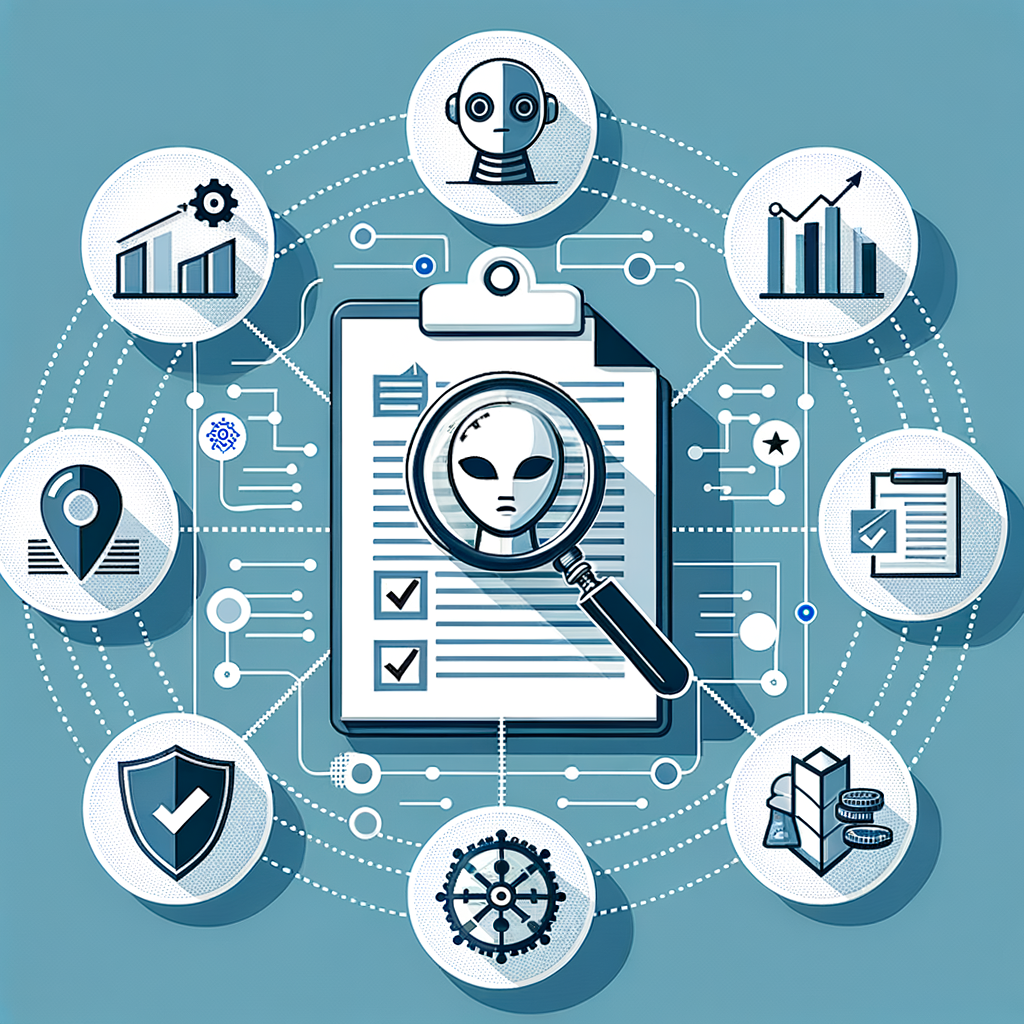What are the latest trends in internal auditing practices?
In India’s fast-paced and ever-evolving business environment, staying static is not an an option. Traditional, backward-looking audits that merely check for historical errors are no longer sufficient to navigate the complex web of modern risks and opportunities. This is where understanding the latest trends in internal auditing practices becomes a game-changer. Internal auditing is an independent, objective assurance and consulting activity designed to add significant value and improve an organization’s operations. Its role extends far beyond simply finding errors; it’s about providing foresight, strengthening governance, and driving strategic growth. For small and medium-sized enterprises (SMEs) and large corporations alike, staying updated on the latest trends internal auditing practices India is crucial for robust governance, effective risk management, and making informed strategic decisions that secure a competitive advantage.
The Evolution of Internal Audit: From Watchdog to Strategic Partner
The perception and function of internal audit have undergone a monumental shift. Historically, internal auditors were seen as corporate watchdogs, primarily a compliance function focused on scrutinizing past financial data and ensuring strict adherence to company policies. Their work was often periodic, predictable, and perceived as a necessary but uninspiring cost center. This traditional view pigeonholed auditors into a reactive role, where their main job was to identify what had already gone wrong.
However, modern business demands a more proactive and forward-looking approach. Today, internal audit is transforming into a strategic partner that sits at the heart of organizational decision-making. The modern auditor is an advisor, a consultant, and a visionary who provides critical insights on emerging risks, operational efficiencies, and potential growth opportunities. This evolution is one of the most significant internal auditing trends for Indian companies, pushing them to leverage their audit function for assurance, advice, and anticipation. Instead of just looking in the rearview mirror, internal audit now helps leadership navigate the road ahead, anticipating bumps and identifying new pathways to success. This strategic pivot makes internal audit an indispensable asset for building a resilient and agile organization.
Top 5 Technology-Driven Internal Auditing Trends
Technology is the primary catalyst reshaping the audit landscape. From automating repetitive tasks to analyzing vast datasets in real-time, new tools are empowering auditors to be more effective, efficient, and insightful than ever before. Here are the top five technological advancements driving this transformation.
1. Data Analytics and Artificial Intelligence (AI)
One of the most powerful emerging trends in auditing practices is the integration of data analytics and AI. In the past, auditors relied on sampling—testing a small subset of transactions to draw conclusions about the entire population. This method was always prone to error. Today, data analytics tools allow auditors to test 100% of a data population, providing complete assurance and uncovering anomalies that would have been missed by sampling. Furthermore, Artificial Intelligence (AI) and Machine Learning (ML) are taking this a step further by enabling predictive analysis. These systems can analyze patterns to predict potential risks, identify complex fraud schemes, and flag deviations from normal operations in real-time, allowing for proactive intervention.
- Actionable Insight for SMEs: You don’t need a massive budget to get started. Even small businesses can leverage powerful data analysis features already built into their accounting software like Zoho Books or Tally Prime. Simple tools like Microsoft Excel’s Power Query and Pivot Tables can also be used to analyze entire datasets, sort transactions, and identify outliers without significant investment.
2. Robotic Process Automation (RPA)
Robotic Process Automation (RPA) involves using software “bots” to automate high-volume, rule-based, and repetitive tasks that were previously performed by humans. In an audit context, this is incredibly valuable. RPA bots can handle tasks like reconciling accounts, processing invoices, verifying data between different systems, and conducting user access reviews across multiple platforms. By automating these mundane activities, RPA frees up human auditors from tedious grunt work, allowing them to focus their expertise on more complex, judgment-based, and strategic areas such as risk assessment, stakeholder interviews, and process improvement consulting. This not only increases the efficiency of the audit process but also improves its overall quality and impact.
- Actionable Insight for SMEs: Small businesses can start with simple automation. Consider using scripts or built-in automation tools in platforms like Zapier or Microsoft Power Automate to handle tasks like generating monthly compliance reports from accounting data or sending automated reminders for pending documentation.
3. Cybersecurity and Data Privacy Audits
As businesses become increasingly digital, the risk of cyber threats has skyrocketed. Consequently, a crucial trend is the heightened focus on auditing cybersecurity controls and data privacy frameworks. Internal auditors are now expected to have a deep understanding of IT governance, network security, and data protection protocols. They play a vital role in assessing an organization’s vulnerability to cyberattacks, the effectiveness of its incident response plans, and its compliance with data protection regulations. In India, this has become particularly important with the introduction of the Digital Personal Data Protection (DPDP) Act, 2023, which imposes strict obligations on how companies handle personal data.
- Actionable Insight for SMEs: You don’t need to be a tech giant to take cybersecurity seriously. Start by conducting a basic cybersecurity risk assessment. This can be as simple as identifying your most critical data, where it is stored, who has access to it, and what security measures (like strong passwords, two-factor authentication, and regular data backups) are in place.
4. Cloud-Based Audit Management
The days of auditors working with cumbersome manual spreadsheets, paper-based work files, and endless email chains are fading fast. The shift to cloud-based audit management software is a major trend that enhances collaboration and efficiency. These platforms provide a centralized hub for planning audits, executing fieldwork, managing documentation, tracking findings, and reporting results. They enable real-time collaboration among audit team members, regardless of their physical location, which is especially important in an era of remote and hybrid work. Automated workflows, centralized evidence repositories, and interactive dashboards make the entire audit lifecycle more streamlined and transparent.
- Actionable Insight for SMEs: Many Software-as-a-Service (SaaS) solutions for audit and compliance management offer affordable, scalable plans suitable for small businesses. These tools can help you organize your compliance activities and create a clear audit trail without the need for expensive on-premise infrastructure.
5. Continuous Auditing and Monitoring
Traditionally, internal audits were conducted periodically, often annually or semi-annually. This “snapshot-in-time” approach meant that issues could go undetected for months. The trend of continuous auditing and monitoring represents a paradigm shift to an “always-on” model. By embedding automated tests and controls directly into business systems, technology can continuously monitor transactions and processes for anomalies, control breakdowns, or fraudulent activity as they occur. This allows for immediate identification and remediation of issues, significantly reducing the window of risk and providing management with a constant pulse on the health of the organization’s control environment.
- Actionable Insight for SMEs: Implementing a simple form of continuous monitoring is easier than you think. Setting up automated alerts in your business banking portal for unusual transactions or configuring rules in your accounting software to flag invoices over a certain threshold are basic yet effective examples of this practice.
Strategic Shifts: Current Practices in Internal Auditing India
Beyond technology, several strategic shifts are redefining the scope and focus of internal audit. These trends are driven by changing stakeholder expectations, a more complex regulatory environment, and a growing understanding of what constitutes business risk in the 21st century.
1. ESG (Environmental, Social, and Governance) Auditing
ESG is no longer a niche concern for large, publicly listed corporations. It has become a critical area of focus for businesses of all sizes. ESG refers to the three central factors in measuring the sustainability and ethical impact of an organization. Investors, customers, employees, and regulators now expect greater accountability on topics like climate impact (Environmental), employee welfare and diversity (Social), and ethical leadership and transparency (Governance). Internal audit is increasingly being called upon to provide assurance over ESG-related data, reporting, and risk management. This includes auditing sustainability reports, verifying claims about ethical supply chains, and assessing the effectiveness of corporate social responsibility initiatives, a process that often aligns with the Corporate Social Responsibility (CSR) Mandate: Section 135 Explained. In India, SEBI’s Business Responsibility and Sustainability Reporting (BRSR) framework serves as a benchmark, and its principles are influencing expectations across the entire business ecosystem.
- Actionable Insight for SMEs: Start small. You can begin by conducting a simple social audit focusing on employee welfare, fair labor practices, and workplace safety. Alternatively, an environmental audit could assess your waste management practices or energy consumption, often leading to cost savings as well as improved corporate citizenship.
2. Agile Auditing
The traditional “waterfall” approach to auditing, which involves creating a rigid annual plan and executing it sequentially over 12 months, is proving too slow for today’s dynamic risk landscape. Agile auditing borrows principles from agile software development to make the audit process more flexible, collaborative, and responsive. Instead of a fixed annual plan, agile auditing uses shorter audit cycles, often called “sprints,” that last a few weeks. These sprints focus on the highest-priority risks as they emerge. The approach emphasizes constant communication and feedback from stakeholders, ensuring that the audit function is always focused on what matters most to the business right now.
- Actionable Insight for SMEs: Instead of a single, intensive annual audit review, schedule quarterly risk review meetings with your management team or external audit consultant. This allows you to dynamically adjust your focus based on changing market conditions, new regulations, or internal business developments.
3. Integrated Risk Management
Risks in an organization are rarely isolated; they are interconnected. A cybersecurity failure (IT risk) can lead to a data breach (compliance risk), which can cause reputational damage (strategic risk) and financial loss (financial risk). Recognizing this, a key trend is moving towards integrated risk management. This involves breaking down the traditional silos between different risk and compliance functions. Internal audit is working more closely with departments like legal, IT security, and operations to develop a holistic, enterprise-wide view of risk. By combining their expertise and insights, these functions can provide the board and senior management with a more complete and coherent picture of the organization’s overall risk profile.
How to Implement the Best Internal Auditing Practices in Your Indian Business
Adopting these modern practices might seem daunting, especially for an SME. However, a structured approach can make the transition manageable and highly rewarding. Implementing the best internal auditing practices India requires a strategic mindset, not just a massive budget.
- Step 1: Conduct a Risk Assessment: Before you do anything else, you must understand your unique risk landscape. Sit down with your key team members and identify the top 3-5 risks your business faces today. Are they financial, operational, compliance-related, or strategic? This assessment will be your guide for prioritizing your audit efforts.
- Step 2: Start Small with Technology: You don’t need a sophisticated, enterprise-wide AI platform on day one. Begin by maximizing the tools you already have. Explore the advanced analytics and reporting features of your existing accounting or ERP software. Use Excel’s data analysis tools. The goal is to get comfortable using data to drive decisions.
- Step 3: Focus on Upskilling or Outsourcing: The skills required for modern auditing are different from those of the past. Invest in training your internal team on topics like data analytics, cybersecurity fundamentals, and ESG concepts. Alternatively, if building an in-house team is not feasible, consider co-sourcing or fully outsourcing your internal audit function to a specialized firm. This gives you immediate access to expert skills and advanced technologies.
- Step 4: Develop an Agile Audit Plan: Ditch the rigid annual plan. Create a flexible audit plan that focuses on your top risks and is reviewed quarterly. This allows you to adapt quickly to new challenges and opportunities, ensuring your audit resources are always directed where they can add the most value.
Conclusion
The field of internal auditing is in the midst of a profound transformation. The shift from a reactive compliance checker to a proactive strategic advisor, powered by technology and a forward-looking mindset, is undeniable. Internal audit is no longer just a cost of doing business; it is a powerful tool for building resilience, driving efficiency, and achieving sustainable growth. For Indian businesses, embracing these latest trends in internal auditing practices is not just about keeping up—it’s about getting ahead. By leveraging data analytics, embracing agility, and focusing on emerging risks like ESG and cybersecurity, organizations can unlock the full strategic potential of their internal audit function and gain a significant competitive edge.
Feeling overwhelmed? Let TaxRobo help you navigate the complexities of modern internal auditing. Contact our experts for a personalized consultation and strengthen your business’s governance framework today!
Frequently Asked Questions (FAQs)
1. Is internal audit mandatory for every company in India?
No, internal audit is not mandatory for every company. Under Section 138 of the Companies Act, 2013, and Rule 13 of the Companies (Accounts) Rules, 2014, it is mandatory for the following classes of companies:
- Every listed company.
- Every unlisted public company having:
- Paid-up share capital of ₹50 crore or more during the preceding financial year; or
- Turnover of ₹200 crore or more during the preceding financial year; or
- Outstanding loans or borrowings from banks or public financial institutions exceeding ₹100 crore at any point during the preceding financial year; or
- Outstanding deposits of ₹25 crore or more at any point during the preceding financial year.
- Every private company having:
- Turnover of ₹200 crore or more during the preceding financial year; or
- Outstanding loans or borrowings from banks or public financial institutions exceeding ₹100 crore at any point during the preceding financial year.
2. What is the main difference between an internal audit and a statutory audit?
While both are types of audits, their objectives, scope, and reporting lines are fundamentally different.
| Feature | Internal Audit | Statutory Audit |
|---|---|---|
| Objective | To evaluate and improve the effectiveness of risk management, control, and governance processes. | To express an independent opinion on the truth and fairness of the financial statements. |
| Scope | Determined by management or the audit committee based on organizational risks and objectives. | Determined by law (e.g., the Companies Act, 2013) and relevant accounting standards. |
| Reporting | Reports to the management and/or the audit committee of the Board of Directors. | Reports to the shareholders of the company. |
| Conducted By | Can be done by employees of the company or an external firm. | Must be conducted by an independent external Chartered Accountant/firm. |
| Frequency | Can be continuous, quarterly, half-yearly, or as required by management. | Typically conducted annually. |
3. How can a small business benefit from internal auditing?
Even if not legally required, small businesses can gain immense benefits from internal auditing. Key advantages include:
- Improved Efficiency: Identifies bottlenecks and inefficiencies in operations, leading to cost savings.
- Stronger Controls: Helps design and implement internal controls to prevent errors and fraud. It is critical to understand how internal control failures lead to business collapse.
- Better Compliance: Ensures adherence to laws and regulations, such as GST and Income Tax, reducing the risk of penalties.
- Increased Credibility: A robust internal audit function enhances credibility with banks, lenders, and potential investors.
- Risk Management: Provides a structured way to identify and mitigate business risks before they become major problems.
4. Can internal audit be outsourced in India?
Yes, absolutely. Outsourcing (or “co-sourcing,” where an external firm assists an in-house team) the internal audit function is a very common and effective practice in India, with many companies realizing the Benefits of Outsourcing Bookkeeping and Auditing Services. Many SMEs and even larger companies choose to partner with specialized firms like TaxRobo Audit Service. This provides them with access to a team of experts with diverse industry knowledge and advanced technological tools, often at a fraction of the cost of maintaining a fully-equipped in-house internal audit department.



